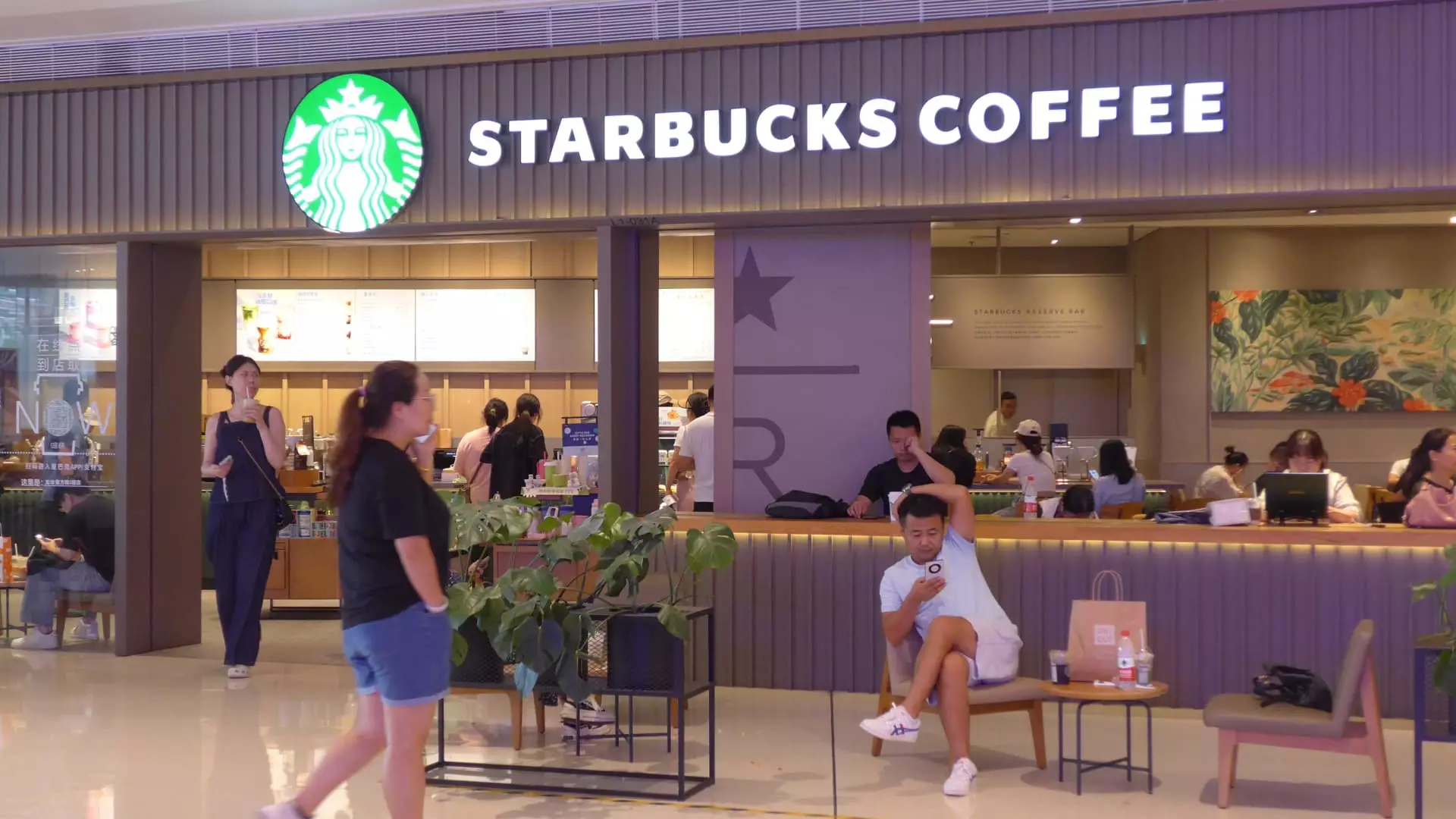In an ever-evolving marketplace, Starbucks, under the leadership of newly appointed CEO Brian Niccol, finds itself at a critical juncture in China. Following a disquieting downturn, with same-store sales plunging 14%, it is evident that the coffee giant must reassess its strategy and implement effective changes. As Niccol prepares for his visit to China, it is essential to understand not only the fierce competition from local chains but also the intricate preferences of the Chinese consumer.
The rise of local coffee brands in China poses a formidable challenge for Starbucks. Chains like Luckin Coffee, which previously faced scrutiny for financial irregularities, have nonetheless accelerated their growth trajectory, boasting over 20,000 outlets by the third quarter of this year. Other emerging names, such as Cotti Coffee, Manner, M Stand, and Seesaw, are capturing market share by offering budget-friendly pricing and unique menu options, thereby attracting a customer base that may still be value-conscious amidst economic uncertainty.
For instance, a small latte at Starbucks commands a price of $4.22 in Beijing, while patrons can indulge in drinks at significantly reduced prices from local competitors, with options such as $2.25 at Luckin and even less at Cotti and Manner. Such stark price differences reflect an escalating price war that Starbucks must navigate to sustain its market presence.
Beyond pricing, local coffee chains have differentiated themselves through diverse and innovative beverage options that cater to the adventurous tastes of the Chinese consumer. Many of these companies frequently update their menus, creating unique blends that deviate significantly from traditional offerings found in Western cafes. From fruit-infused coffees to unconventional combinations incorporating rice or cheese, they appeal to a broad spectrum of consumers who seek novelty in their daily caffeine fix.
Manner, for example, prides itself on sourcing local beans and training its baristas for semi-automatic coffee machines. On the other hand, high-end offerings from M Stand, such as lattes served in edible oatmeal cookie cups, showcase the willingness of consumers to pay more for a premium experience. This innovative mindset not only keeps the local brands relevant but also serves to challenge Starbucks’ offerings directly.
Despite the increasing competition, Starbucks still enjoys a loyal following in China. One of its major advantages remains its position as a social hub—offering a conducive environment for friends to gather or for professionals to conduct meetings. The brand has cultivated an image of being an aspirational choice, distinguished by its commitment to quality and a consistent customer experience across its locations.
Starbucks stores are often characterized by clean interiors, comfortable seating, and a friendly staff, which contribute to a pleasant atmosphere for patrons. Therefore, while local brands may capture market segments looking for lower prices, Starbucks still has an opportunity to capitalize on its established brand image.
The competitive landscape extends beyond coffee alone as Starbucks faces significant competition in the tea sector, represented by chains like ChaPanda and Auntea Jenny. These establishments offer substantial price reductions—often around 60% less than comparable offerings from Starbucks, particularly for trendy fruit and milk teas.
Auntea Jenny, for example, sells lattes for only $2.67, making it a formidable choice for consumers who are increasingly inclined to explore diversified packaging of beverages. This diversification, coupled with the proliferation of grab-and-go options at convenience stores, indicates a further shift in consumer purchasing patterns that Starbucks must adapt to in real-time.
As Niccol embarks on his journey to better understand the complexities of the Chinese market, he must actively consider both the pricing strategies and unique consumer preferences that local brands leverage. Identifying areas where Starbucks can innovate—be it through limited-time offerings, evolving product lines, or enhancing the in-store experience—will be crucial.
While Starbucks commands significant advantages through its established reputation and brand equity, the changing dynamics of the coffee landscape in China present both challenges and opportunities. Adapting its approach to recognize and respond to local tastes, preferences, and competitive pressures will be central to its ongoing success in this critical region.

